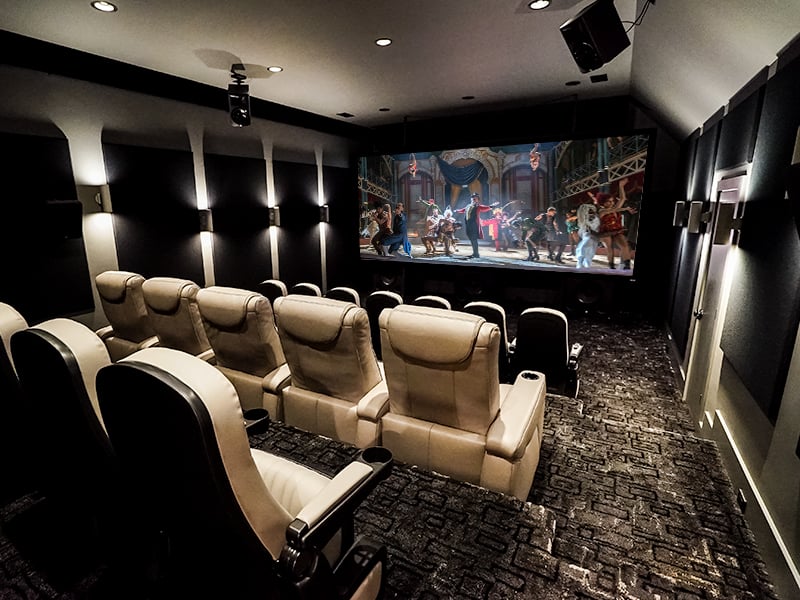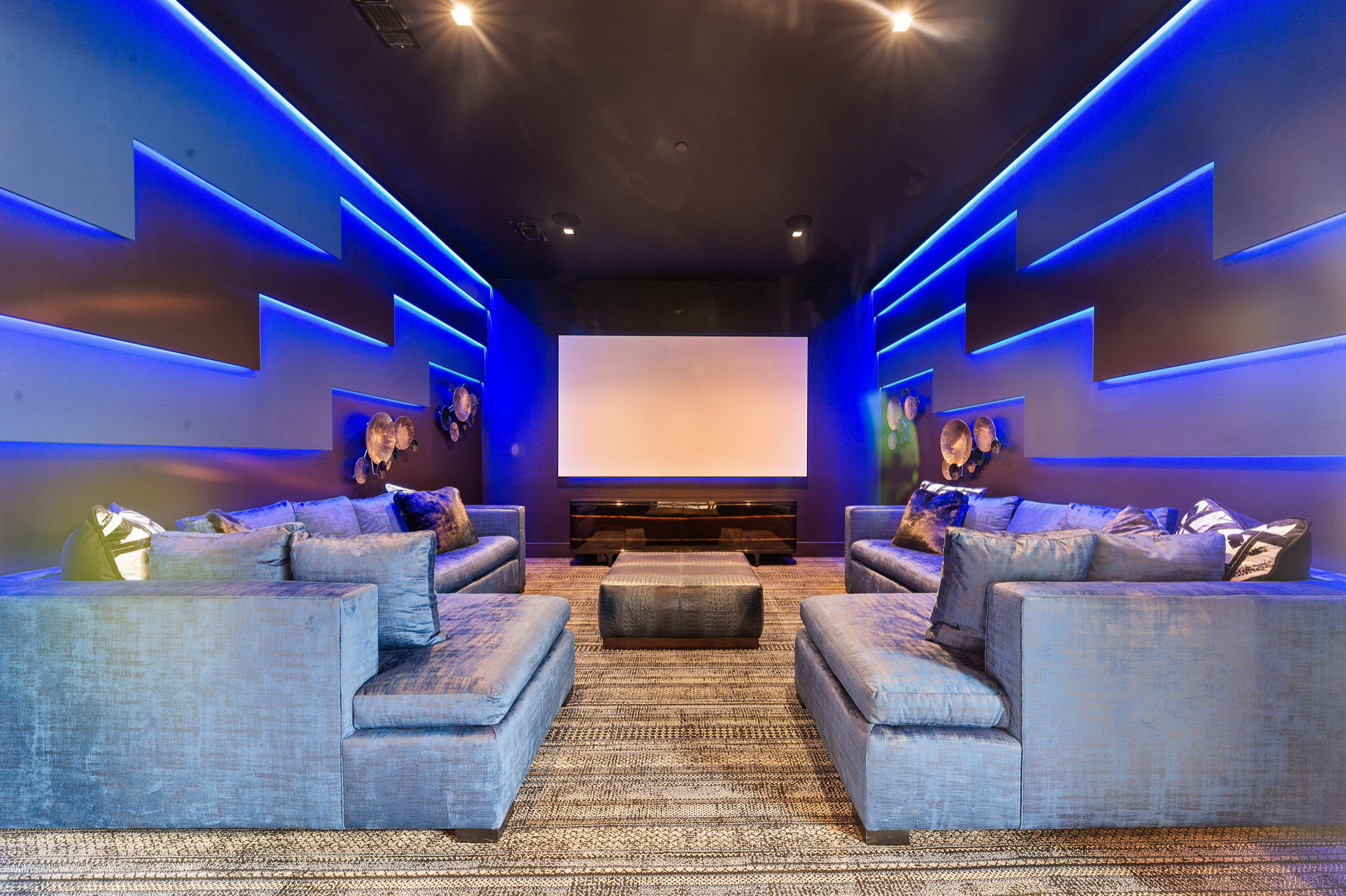Why Tampa Home Theater Installation Is a Revolutionary for Your Viewing Experience
Why Tampa Home Theater Installation Is a Revolutionary for Your Viewing Experience
Blog Article
Home Theater 101: Every Little Thing You Need to Know for a Motion Picture Experience in your home
Developing a home cinema that measures up to the cinematic experience of a commercial theatre entails careful consideration of numerous parts, consisting of screen choice, audio systems, and area layout. Whether you are pondering the ideal screen size or the details of surround noise, comprehending these basics is necessary.
Picking the Right Screen
When establishing a home cinema, picking the ideal screen can make or damage the viewing experience - home theater installation tampa. The display serves as the focal point of your setup, affecting picture top quality, checking out angles, and overall visual. Trick factors to think about consist of display kind, resolution, and dimension
First, identify the ideal display dimension based on your space dimensions and seating distance. A basic standard is to sit approximately 1.5 to 2.5 times the angled display dimension for optimal watching. Next, pick in between numerous display kinds, such as fixed-frame, motorized, or retractable screens, each offering distinctive benefits. Fixed-frame displays generally offer the very best photo quality, while mechanized choices permit versatility in area usage.
Resolution is another critical variable. For a really immersive experience, consider a display made for 4K and even 8K content, ensuring intensity and quality. In addition, consider the display's gain, which influences brightness and contrast; a higher gain can enhance brightness in well-lit spaces, while a reduced gain might be preferable for darker atmospheres.
Selecting Audio Equipment
Audio tools is an important component of any home cinema system, significantly boosting the overall watching experience. The choice of audio equipment can establish the deepness, quality, and immersion of audio, essential for developing a motion picture atmosphere.
When picking audio equipment, consider a surround sound system, which generally includes a receiver, multiple speakers, and a subwoofer. A 5.1 or 7.1 network system is suggested, where the initial number stands for the audio speakers and the second the speaker, offering an immersive soundscape. The receiver is the heart of the system, handling audio and video clip signals, and ought to support modern-day layouts like Dolby Atmos for an enhanced spatial experience.
Quality audio speakers are necessary; seek versions that provide a well balanced noise account with great bass action. Floor-standing speakers can produce richer noise, while bookshelf choices save area. Furthermore, consider cordless alternatives for convenience of installment, although wired systems commonly provide superior efficiency.

Ideal Seating Plans
Developing a suitable home theater experience pivots dramatically on optimum seating setups. The setup of seats plays a critical duty in both convenience and seeing top quality, straight impacting the general cinematic experience.
First, take into consideration the display dimension and viewing distance. An usual standard is to position seats at a distance roughly 1.5 to 2.5 times the angled size of the display. This ensures an immersive experience without straining the eyes.
Following, elevation is crucial. If your seating is in a tiered format, my review here the back rows must be greater than the front to stay clear of blockages. For flat seats, make sure that the front row is not as well near the display, which every person has a clear view.
Moreover, take into consideration the arrangement in regards to social dynamics. Team seats can enhance the public experience, while specific seats might be liked for personal viewing.

Finally, prioritize comfort with ergonomic seats that supports prolonged viewing durations. Integrating recliners or supported seats can dramatically boost the experience, making the home movie theater a recommended location for both home entertainment and relaxation.
Lighting and Atmosphere
Effective lights and atmosphere are necessary components of a properly designed home theater, as they considerably affect the checking out experience. The appropriate illumination can boost the cinematic feel, while inadequate options can diminish it. For ideal outcomes, think about a split illumination method that consists of ambient, job, and accent lights.
Ambient lighting offers basic illumination, ensuring that the area is not entirely dark, which can strain the eyes. Dimmer buttons are highly advised, enabling modifications based upon the material being seen. Task lighting, such as wall surface sconces or flooring lights, uses practical lighting for tasks like analysis or browsing the space without interfering with the general environment.
Accent lighting can be used to highlight architectural functions or produce centerpieces, including deepness and interest to the room. LED strip lights behind screens or along shelves can supply a subtle radiance that improves the visual experience without overwhelming the viewer.

Wiring and Installation Tips
A well-planned circuitry configuration is essential for achieving ideal efficiency in your home cinema system. Correct wiring not just makes sure high-quality sound and video signals but additionally enhances the general aesthetic of your room. Begin by drawing up your format, recognizing where each part will certainly be positioned, including your display, speakers, and receiver.
When selecting wires, prioritize top notch, properly assessed circuitry to minimize signal loss. HDMI cords should be used for video clip links, while speaker cable need to match the specifications of your speakers and amplifier. Select in-wall ranked wires to follow security standards and keep a clean appearance.

Verdict
In recap, producing an outstanding home cinema experience requires mindful factor to consider of different components, consisting of screen option, audio equipment, seating arrangements, illumination, and circuitry. Each element plays an important function in attaining optimal performance and setting, inevitably improving the pleasure of home amusement. By prioritizing these variables, a motion picture ambience can be effectively replicated, permitting immersive checking out experiences that rival conventional theater settings. Attention to information in each location is necessary for general contentment.
Developing a home cinema that rivals the cinematic experience of a commercial theater involves careful consideration of you could try these out multiple elements, including display choice, sound systems, and room format.When setting up a home movie theater, choosing the right screen can make or damage the viewing experience. Next, select in between different display kinds, such as fixed-frame, motorized, or retracting screens, each offering unique benefits. For a genuinely immersive experience, take into consideration a display made for 4K or also 8K material, ensuring sharpness and quality.In recap, producing an outstanding home cinema experience requires mindful factor to consider of various elements, consisting of screen selection, audio equipment, seating arrangements, lighting, and electrical wiring.
Report this page